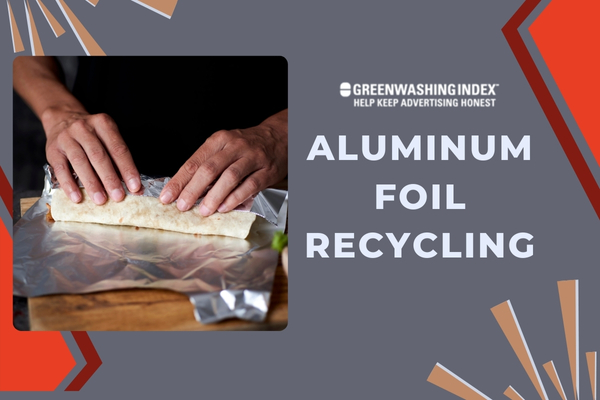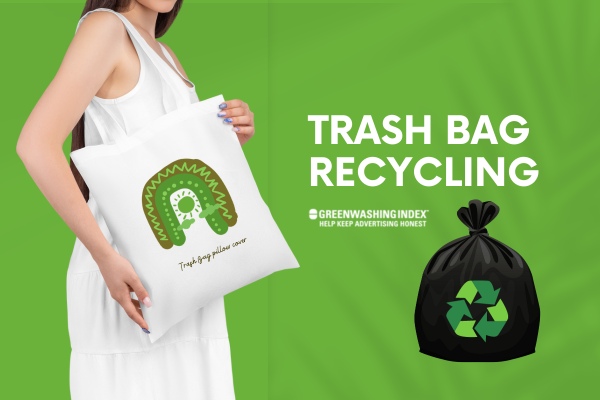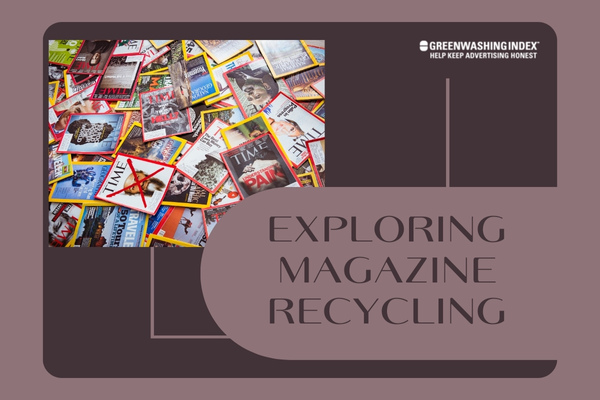Do you ever wonder what happens to your aluminum foil after it’s carried away in the recycling bin? Does aluminum foil recycling really work, or is it just a myth we’ve all bought into?
In this post, we’re going to peel back the layers of truth about this shiny, versatile material. Stick around as I unravel its complex journey from our kitchens to the recycling center and beyond.
When you toss out used aluminum foil, you’re actually discarding a valuable resource that can be recycled an infinite number of times without degradation.
But here’s the catch: not all foil makes it through the process as efficiently as you’d hope. The success of aluminum foil recycling largely depends on how clean and contamination-free it is before hitting the recycle bin.
The Truth About Aluminum Foil Recycling
I’ve often found that when we talk about recycling, aluminum foil doesn’t get as much attention as it should. You see, aluminum foil recycling is a topic packed with layers, much like the foil itself. It’s not just a matter of tossing it into the recycling bin and hoping for the best. The reality is quite complex.
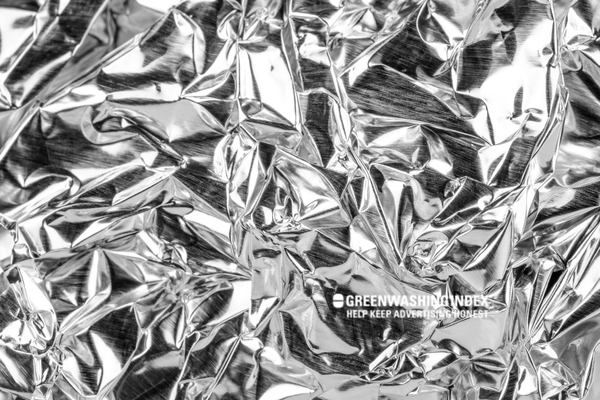
Why Is Aluminum Foil Recycling Not as Clear-Cut as We Think?
You may wonder why we can’t just recycle aluminum foil like we do with soda cans or other aluminum products. After all, they’re all made from the same material, right? Well, here’s where things get tricky.
First off, while aluminum is highly recyclable and can be turned into new products over and over again without losing quality, not all aluminum foil finds its way back into the cycle – and there are several reasons for this.
To begin with, the size matters greatly. Small pieces of aluminum foil often get lost or overlooked in sorting facilities because they don’t have enough weight to be separated correctly by machines. This means a good deal of it never even gets to the melting process where recycling actually starts.
Then there’s contamination. When I use aluminum foil in cooking or packaging food items at home or in restaurants, it often comes in contact with food residue like oil or sauce.
While I might try to wash off some of these remnants before tossing out my used foil, it’s not always successful – and let’s be honest – sometimes I might not try at all because I’m unsure if it’s necessary or just plain forgetful.
Another layer (quite literally) is composition; sometimes, what seems like pure aluminum foil has a coating of plastic or other materials for added strength or heat resistance, which makes recycling far more complicated because these hybrids cannot undergo the same process as pure metal would need to be recycled separately from one another.
Many folks are still unclear about all these issues; hence, they either toss their used foils away carelessly, assuming that somehow ‘it will get recycled’ without realizing that some local programs don’t even accept them due to aforementioned problems, consequently adding more waste unnecessarily rather than helping reduce the environmental impact which was probably their original intention when reaching out for what seemed an eco-friendly choice!
So then, what can I do? Well, becoming aware is step one—understanding that although an item may seem recyclable at face value, it doesn’t necessarily guarantee its passage through recycling systems flawlessly due exclusively to its material properties such as size & cleanliness standards affecting compatibility within existing infrastructures, thereby requiring extra effort on our parts individually yet collectively crucial towards sustainability goals overall!
Understanding this tangled web around aluminum foil recycling shows us clearly how every choice counts towards the bigger picture – sustainable packaging alternatives being but example among many wherein efforts converge between manufacturers and consumers themselves, each working respectively on designing better solutions while engaging actively within eco-friendly practices eventually reducing environmental impact significantly long term if done right consistently!
Also Read: Pineapple Composting: Your Ultimate Guide to Doing it Right!
Essentials of Aluminum Foil Recycling
When I think about aluminum foil recycling, it seems like a straightforward process. However, it’s a bit more complex than just tossing used foil into the recycle bin. To get it right, we need to understand what makes aluminum foil recyclable and what doesn’t.
A Look at What Makes Aluminum Foil Recyclable and What Doesn’t
Aluminum foil is a valuable resource that can be reused many times over without losing quality. But there’s a catch – it must be clean and free of food or other contaminants to be recycled properly.
Contamination concerns:
Unfortunately, aluminum foil often gets tossed out with bits of food and grease still stuck to its surface. When this happens, the recycling process gets complicated.
Here are some common contaminants that affect recyclability:
- Food remnants (like leftover pizza toppings or grill residue)
- Grease and oils
- Sticky substances like syrup or chocolate
- Paint or markers used for labeling
- Other non-aluminum materials attached to the foil
For proper aluminum foil recycling, I make sure to follow these steps:
- Clean off any food from the foil as best as possible.
- If cleaning doesn’t work due to heavy contamination, that piece must go in the trash.
- Flatten out any crumpled pieces since crushed or balled-up foil might not get sorted correctly at recycling facilities.
- If your recycled ball of aluminum is too small (smaller than your fist), they might not recycle it because small items can get lost in the process.
- Check with your local recycling program if they accept aluminum foil; guidelines can vary by location.
Remembering these points helps me prepare my aluminum for its next life cycle properly! By practicing eco-friendly habits like these, we all contribute to less waste and better environmental impact management with each piece of aluminum that gets another chance rather than ending up in a landfill.
It’s actions like this—being meticulous about such details—that play a big role in balancing sustainable packaging with our modern-day conveniences.
So, while you may wonder if taking an extra minute to clean off your used foil makes a difference, trust me when I say every little effort counts toward bigger changes in how we handle our resources responsibly!
Also Read: Paint Recycling: The Ultimate Guide to Responsible Disposal
The Right Way to Recycle Aluminum Foil
Recycling is crucial in keeping our planet clean and reducing waste. Aluminum foil is a common item in many kitchens, but not everyone knows how to recycle it properly. I want to share how you can do aluminum foil recycling the right way. This helps our environment and makes sure we use resources wisely.
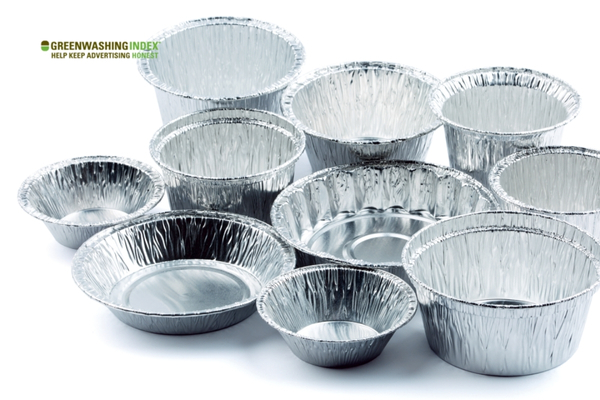
Step-by-Step Guide to Successful “Aluminum Foil Recycling”
Recycling aluminum foil isn’t hard, but you need to follow certain steps:
- Clean the Foil: First, make sure your aluminum foil is clean from any food leftovers. Food can contaminate the recycling process. So, if you’ve wrapped food in the foil, remove all bits of food before doing anything else.
- Dry the Foil: After cleaning it, let the foil dry completely.
- Flatten and Smooth Out: Next, flatten out your piece of aluminum foil as best as you can.
- Check for Thickness: Aluminum recycling works best when we recycle thicker pieces together because they don’t get lost during sorting at recycling centers. If your piece of foil is very thin or small, press it together with more clean and dry pieces until you have a larger amount to recycle.
- Make a Ball: Once you have enough thick or multiple flattened foils, create a ball—roughly about the size of a tennis ball or larger—to ensure that it won’t get mixed with other materials or slip through sorting machines at recycling facilities.
- Look for Local Guidelines: Different places may have different rules on recycling aluminum foil—so check your local recycling guidelines for any special instructions.
- Recycle Right Bin: When everything is checked off —cleaned, dried out, smoothed out—place your ball of aluminum in your recyclable bin if local guidelines permit. Do not mix these with other materials like glass or paper; these should go into separate bins.*
- No Non-recyclable Items: Remember that some foils come attached to paper or plastic, which are not recyclable together with aluminum— separate these and only put pure aluminum into your bin.
- Encourage Others: It’s important not just to do this yourself but also to tell family members and friends about how simple yet impactful this practice can be in aiding better environmental health.
By following this step-by-step guide on aluminum foil recycling, you can properly create an eco-friendly habit that turns something as simple as kitchen waste into sustainable packaging practices over time.
Also Read: Paper Bags Recycle: A Must-Know Sustainability Guide
Facing The Challenges in Today’s Systems
Recycling aluminum foil should be simple, right? But it turns out it’s not that straightforward. There are hurdles everywhere—from our houses to the big recycling centers.
Tackling Common Obstacles in Aluminum Foil Recycling
When I’m thinking about aluminum foil recycling, I can see how tough it is to deal with some normal problems most of us don’t even know about. Let me share what I found:
- Contamination. We use foil to wrap all sorts of food, and bits of food stick to the foil even after we’re done. If the foil isn’t cleaned well before being thrown into the recycling bin, these sticky bits can spoil the whole recycling process.
- Sorting Issues. Aluminum foil is light and can be bunched up easily. This makes it tricky for machines at recycling plants to sort and separate from other stuff like paper or plastic.
- The Size Problem. Small pieces of crumpled-up aluminum foil often get lost amidst bigger garbage because they’re so tiny compared to large cans or boxes.
- Lack of Awareness. Many folks just don’t know that you can recycle aluminum foil! Some toss it out with regular trash without a second thought.
- Economic Hurdles: Sometimes, it costs more money for a center to recycle aluminum foil than what they make off selling recycled materials.
All these challenges mean that when we talk about aluminum foil recycling, we’re also talking about changing systems—and habits—a lot more than you would think.
Community Efforts That Are Improving Aluminum Foil Recycling Success Rates
Recycling aluminum foil isn’t always straightforward. This is because food and grease often stick to the foil, making it hard to recycle. However, some places are finding ways to make “aluminum foil recycling” work better.
In some towns across the country, people are putting in a lot of effort to get better at recycling aluminum foil. Let’s look at a few examples of what they’re doing right.
One community found that education is key. They started holding workshops teaching folks how to clean and prepare aluminum foil for recycling. They told them it’s important that the foil be free of food before it goes into the bin. By sharing this simple but crucial step, they saw more people bringing in cleaner foil ready for recycling.
Another place focused on making collection points more available. Before, there were just a few bins scattered around town, which made dropping off aluminum inconvenient for many people. By placing more bins in high-traffic areas like supermarkets and schools, this community saw a big jump in the amount of foil collected.
There was also a neighborhood that teamed up with a local business specializing in metal recycling. Together, they held an event where people could bring all sorts of metals, not just aluminum foil. It became popular quickly because folks liked the idea of being eco-friendly and getting rid of unwanted metal junk all at once.
Lessons learned from these success stories:
- Teach People: When you show someone how to do something properly and explain why it matters, they’re likely going to do it.
- Make It Easy: If you give folks plenty of chances to recycle by placing bins where they go every day, you take away the hassle.
- Join Forces: Teaming up with businesses or other organizations can create much larger events with more impact than going it alone.
By looking at these cases from different parts of America, we see that common sense changes can make “aluminum foil recycling” much better for everyone – helping us keep our planet clean for longer.
We learn that when we all work together towards sustainable packaging and adopt eco-friendly practices like these, even challenges like “recycling aluminum” become easier over time!
Also Read: Christmas Party Secrets: Ditch Plastic for Eco-Friendly Fun!
Innovations Fueling Progress
When we talk about aluminum foil recycling, it’s exciting to know how new technologies are making the process better. We have come a long way in dealing with the challenges. Innovative solutions are popping up all over to help us sort and recycle aluminum foil more efficiently.
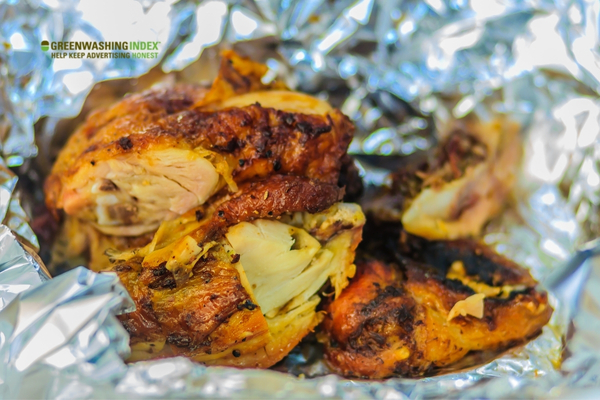
Technological Advances Driving Better Efficiency in Aluminum Foil Recycling
Let’s dive into some of these amazing innovations:
- Better Sorting Machines: New sorting machines use X-rays to spot aluminum foil on recycling lines quickly. Since aluminum is valuable, picking it out from other stuff is important. Think of these X-rays like super-smart eyes that don’t miss anything made of aluminum—they spot it even when it’s squished or mixed with other materials.
- Advanced Separation Techniques: Magnetic fields aren’t usually friends with aluminum because it’s not magnetic. But now, thanks to a smart twist in technology called an “eddy current separator,” we can eject pieces of non-ferrous metals (like our good pal aluminum) away from the rest by using powerful magnets that create a unique field. This kind of magic trick helps sort out even small bits of foil.
- Enhanced Melting Processes: Melting down recycled aluminum has gotten better, too! People have made furnaces that use less energy and still do a top-notch job melting down the foil so it can be turned into something new again.
- Improved Contamination Removal: The cleaner the recycled material, the better! There’s tech now that washes away leftover food bits and other contaminants from used aluminum foils before they’re melted down—this means you get cleaner recycling material, which is excellent for making new products!
By using these high-tech helpers, aluminum foil recycling has become more streamlined than ever before—we’re getting smarter about saving energy and resources while doing something good for our planet! It shows that when we put our minds to solving problems, we can come up with some pretty neat ways to take care of our environment through eco-friendly practices like sustainable packaging and reducing environmental impact.
Also Read: Greenhouse Cooling Tricks: Your Ultimate Guide
Myths vs Facts on Aluminum Foil Recycling
When we talk about aluminum foil recycling, it’s essential to know what’s true and what’s not. There are many stories out there. Some of them are right, and some are wrong. We need clear facts to understand the real deal about recycling this shiny silver stuff. Here, I am taking a closer look at what people often believe about aluminum foil recycling and setting the record straight.
Myth 1: You can’t recycle aluminum foil if it has food on it.
Fact: You can recycle aluminum foil even if it has bits of food on it.
Many folks think that if their aluminum foil has some food left on it, they can’t put it in the recycling bin. That’s not quite right. The truth is, you can still recycle it, but you should try your best to clean off the food first. A quick rinse should do; no need for a heavy scrub.
Myth 2: Aluminum foil isn’t worth recycling because it’s too light in weight.
Fact: Every bit counts! Even lightweight materials like aluminum foil are valuable for recycling.
Don’t let the size fool you! It might seem too light or small to matter, but aluminum is a precious metal that recycles really well. Bringing together lots of pieces of foil makes a big difference over time.
Myth 3: Aluminum foil goes into general metal recycling bins with no special treatment needed.
Fact: While you can put your used aluminum in a metal bin, sometimes special rules apply to foils.
Oftentimes, places will have separate instructions for different metals or shapes because processing all kinds at once isn’t efficient or possible at their facility. Check with local guidelines to be sure.
Myth 4: All types of aluminum material have the same value when recycled.
Fact: The value changes depending on how easy or hard an item is to recycle.
Things like soda cans might be more straightforward to process than sticky candy wrappers made of mixed materials – including aluminum – which could lower its worth when trying to reuse the material.
Myth 5: Recycling one piece of aluminum doesn’t save much energy compared with producing new material from scratch
Fact: Every small piece saved means a lot! Recycling even one small piece saves enough energy to run things like TVs for hours.
Recycling saves loads more energy compared with making new stuff from raw resources – up to around 95% less power needed, which is huge!
Its clever disguises sometimes spread confusion, but shining a light on these truths helps everyone get better at helping our planet through things like eco-friendly practices and sustainable packaging efforts such as proper aluminum foil recycling.
Conclusion
The complexity of aluminum foil recycling shouldn’t discourage us. Instead, it reminds me how each little step can lead to a huge positive change for our planet. I’ve learned that understanding and overcoming the challenges in the recycling process allows us to contribute to more sustainable packaging solutions and reduce the environmental impact of aluminum.
Through proper practices such as cleaning and correctly disposing of foil, as well as supporting innovative technologies and community initiatives, we can all play a part in enhancing eco-friendly habits.
Key Takeaway Points:
- Aluminum foil is recyclable but requires specific handling.
- Cleanliness is critical; avoid contamination to ensure successful recycling.
- Following correct disposal guidelines maximizes the chances of aluminum being recycled.
- Community efforts and technological advances are key drivers of better recycling outcomes.
- Distinguishing between myths and facts helps increase effective recycling efforts.

